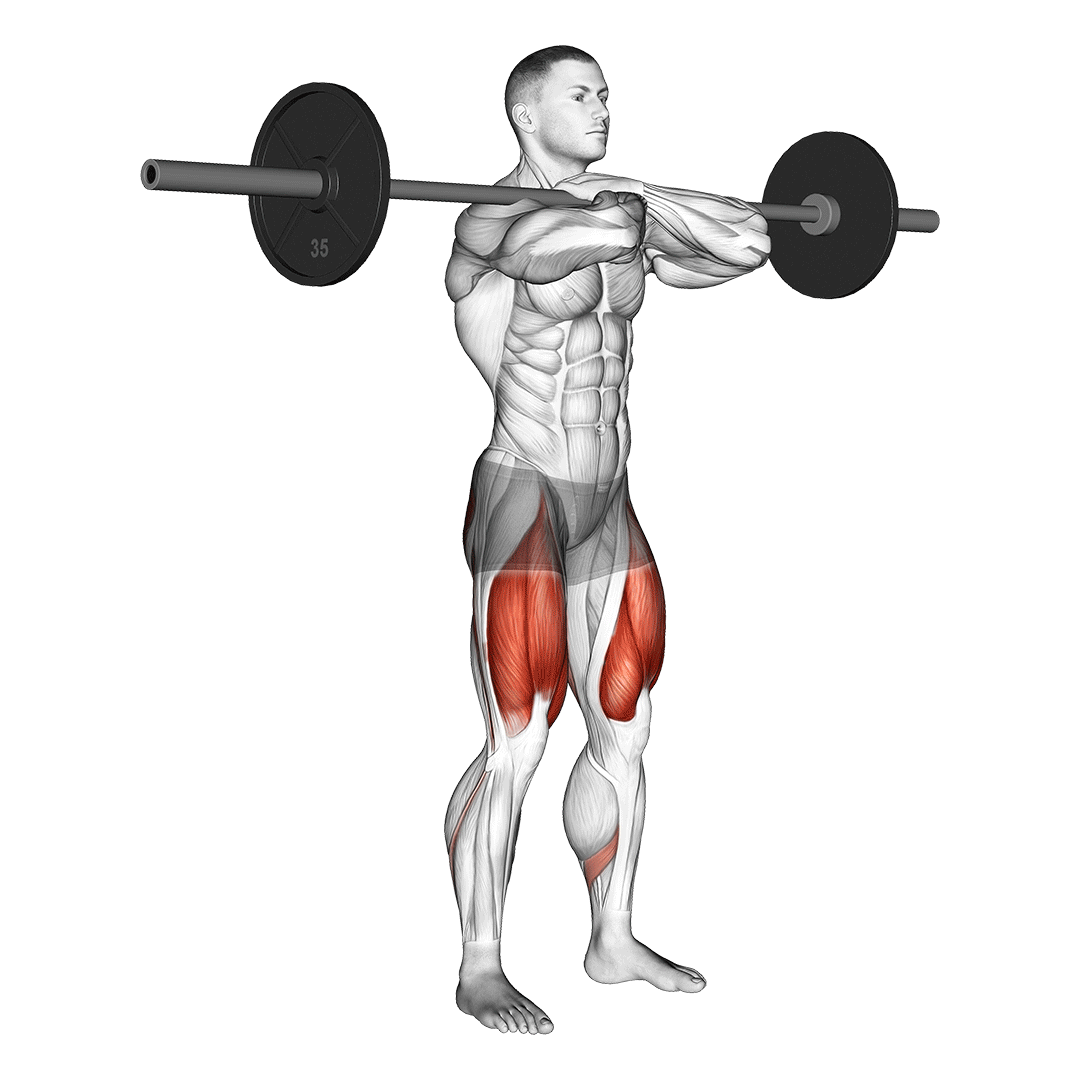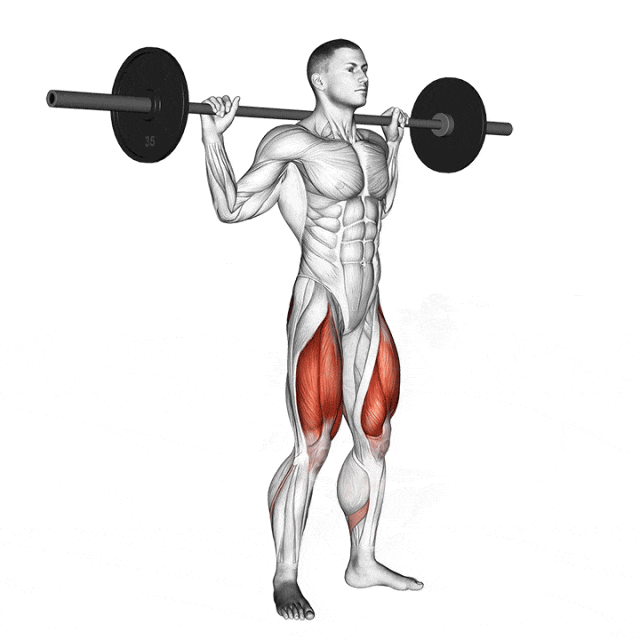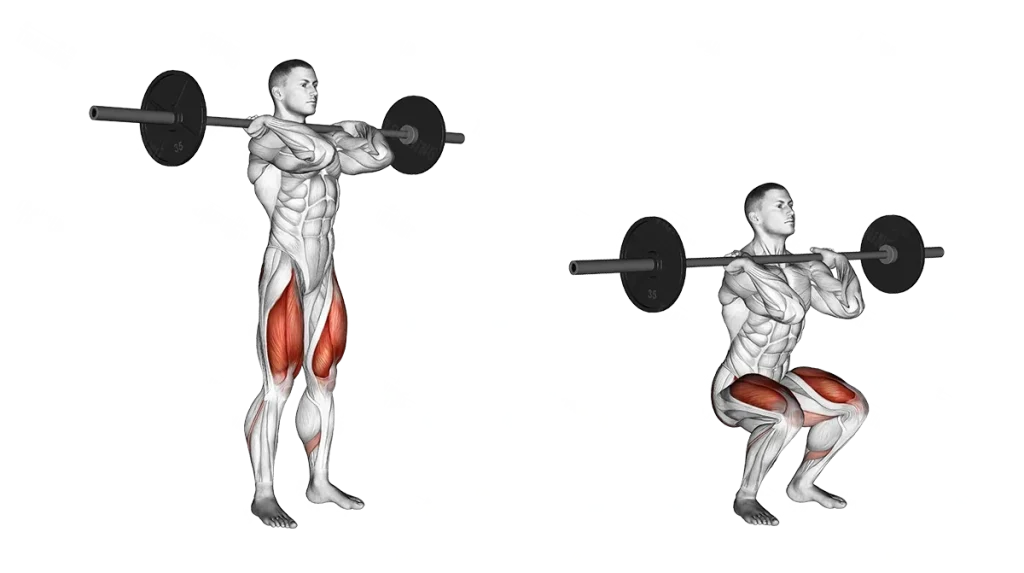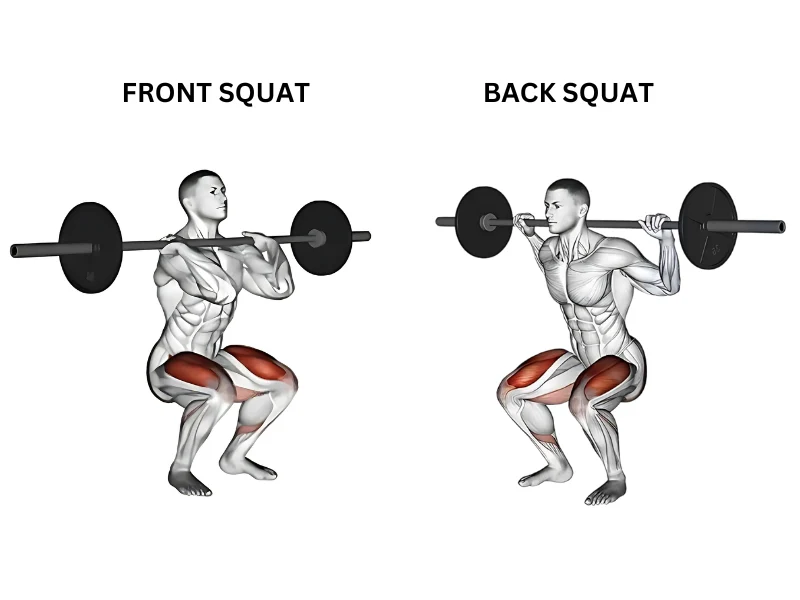Hey there, lifters and athletes. Coach Mike here. Over the last decade coaching everyone from weekend warriors to competitive powerlifters, I’ve seen the squat debate ignite more gym arguments than reracking weights! Front Squat vs Back Squat: Front squats and back squats are variations of a lower body exercise that primarily works the quads, glutes, and hamstrings. Front squats emphasize quad activation and upper back engagement due to the upright posture, while back squats engage more glutes and hamstrings due to the forward hinge.
Both front squats and back squats are absolute cornerstones for building serious lower body strength and power. But figuring out which one you should prioritize?
1. Front Squat vs. Back Squat: Which Is Best
Front Squats
- Bar Placement: You cradle that barbell right across the front of your shoulders, fingertips underneath it (clean grip) or arms crossed (cross-grip). It sits in front, plain and simple. Getting this position comfortable took me months of wrist mobility work – trust me, it’s worth the effort!
- Muscles Worked: Quads, core, upper back, glutes, and hamstrings.

- Movement:
- Fight the Fall: Because the bar’s loaded in front of your center of mass, your body instinctively fights tipping forward. This is the core challenge!
- Elbows High, Chest Proud: To counter that forward pull, you must drive your elbows high (aiming them straight forward, not down) and keep your chest lifted aggressively. Imagine trying to point your sternum at the wall in front of you. If your elbows drop, you will dump the bar – I’ve done it!
- Knees Forward, Upright Torso: Accept that your knees will travel forward significantly more than in a back squat. This knee-dominant path is key for quad focus. Your torso stays incredibly upright – minimal forward lean. Think “stand tall” throughout the entire descent and ascent.
- Core on Lockdown: That upright position isn’t passive. You need to brace your core like you’re about to be punched in the gut, and actively pull your shoulder blades back and down to create a solid shelf for the bar. Lose tension here, and the rep falls apart.
Back Squats
- Bar Placement: This is the familiar one – the bar rests securely across your upper back/traps (high-bar) or slightly lower on the rear delts (low-bar). It’s behind you, anchored on your back.
- Muscles Worked: Quads, glutes, hamstrings, and lower back.

- Movement:
- Break at the Hips First: Initiate the descent by pushing your hips back (like sitting into a chair behind you), then bend your knees. This “hip hinge” is crucial, especially for low-bar.
- “Sit Back” Sensation: Feel the weight loaded over your mid-foot to heels. There’s a distinct feeling of sitting back into the movement compared to the front squat’s vertical drive.
- Controlled Forward Lean: Unlike the front squat’s enforced uprightness, back squats allow (and often require) a moderate forward torso lean to keep the bar path over mid-foot. This lean engages the posterior chain powerfully. Don’t fight it – control it.
- Drive Through the Whole Foot, Finish with Hips: On the ascent, drive your feet hard into the floor, spreading the floor apart. Think about pushing through your entire foot. As you rise, drive your hips forward powerfully under the bar to finish the rep strong. This hip thrust at the top is where the glutes really fire – I cue my clients to “squeeze a walnut” with their glutes at lockout!
Which Squat Actually Wins?
- Reach for the Back Squat If:
- Your main aim is maximizing overall strength and lifting the heaviest possible loads.
- You want to build significant muscle mass across your entire posterior chain (glutes, hams, back).
- You have good shoulder/wrist mobility but perhaps struggle with the upright torso demand of front squats.
- You’re training for powerlifting or sports demanding explosive hip drive (think football linemen, shot putters).
- Opt for the Front Squat If:
- Quad development is your primary focus (hello, sprinters and cyclists!).
- You need to prioritize core strength and upper back engagement.
- You experience knee pain or lower back discomfort with back squats (as many of my clients initially do). The biomechanics are simply kinder here.
- You’re an Olympic weightlifter (front squats are essential for catching cleans) or participate in sports requiring an upright running posture (distance runners).
- Use Both: They complement each other brilliantly. Back squats build the raw horsepower, front squats refine the technique, boost the quads, and build resilience. It’s not an either/or; it’s a powerful toolkit.
2. When to Choose a Front Squat vs. a Back Squat
- What’s my PRIMARY training goal right now?
- Raw Strength & Size? Back Squat.
- Quad Focus, Olympic Lifting, Core Challenge? Front Squat.
- How does my body feel?
- Knee tweaky? Lower back grumpy? Front Squat is likely the safer, more comfortable bet to keep progressing.
- Shoulders/wrist tight? Back Squat (especially low-bar) might be easier to get into position.
- What does my sport demand?
- Need explosive hip power? Back Squat emphasis.
- Need upright endurance strength or knee stability? Front Squat emphasis.
- Am I stuck in a plateau?
- If your back squat has stalled, introducing front squats can shock your quads and core, often leading to breakthroughs. I’ve seen it happen dozens of times.

The best squat for you is the one that aligns with your goals, respects your body’s current state, and helps you progress sustainably. Don’t be afraid to experiment. Maybe it’s a heavy back squat day followed by lighter front squats later in the week. Maybe it’s a front squat cycle to address a weakness. There’s no single right answer, only the right answer for you, right now.
So, which variation are you leaning towards trying first, or giving more focus? Get under that bar, focus on form, and build some strength!
Welcome! I’m Jordan Mitchell, the dedicated editor at Leadman Fitness, where we specialize in manufacturing high-quality bumper plates, barbells, weight machines, kettlebells, and dumbbells. With a passion for fitness and a keen eye for detail, I ensure that our product information is clear, accurate, and engaging for our customers. My role involves collaborating closely with our design and production teams to highlight the innovative features and superior craftsmanship that set Leadman Fitness apart in the industry. Whether you’re a professional athlete or a fitness enthusiast, I’m here to provide you with the information you need to achieve your training goals with our top-of-the-line equipment.
